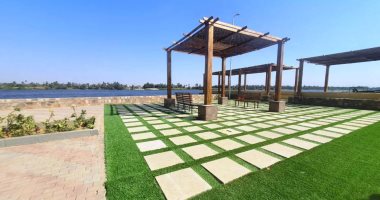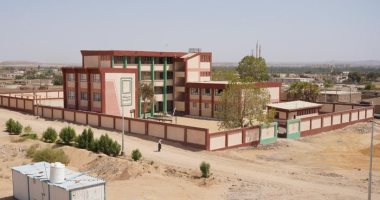Realizing the importance of the transition to a green economy, which completes the three dimensions of sustainable development, Egypt has adopted several initiatives and programs theat collectively aim to accelerate the transition process.
The green economy focuses on preserving natural resources and reducing environmental pollution, and is thus considered an alternative to the traditional development pattern, which carries risks of resource depletion, and widespread threats to the environment, human health and living conditions.
Within the framework of sustainable rural development, the Egyptian Ministry of Planning and Economic Development issued the “Citizen’s Guide to the Green Village” in an effort to spread the culture of environmental sustainability and raise awareness of the most important practices that have a positive impact on the environment in the Egyptian countryside.
The guide discussed ways to save energy, water, resources, and waste management.

Green Village
The “Green Village” initiative was launched to rehabilitate the main villages of the nation-wide initiative of Haya Karima to comply with the global environmental standards of the World Green Building Council.
The initiative consists of three phases with a total of 175 villages, one village in each center, as a model that can be replicated. The initiative is jointly implemented by the governorates, the Haya Karima Foundation, the Engineering and Environmental Consultation Company, and the Egyptian Green Building Association.
Green Village applications in Haya Karima
-Implementing green building standards
– Rehabilitation and lining of canals
– Covering drains inside residential blocks
– Application of modern irrigation systems
– Expansion of organic agriculture
– Drinking water station
– Tertiary sanitation
– Biogas units
– Lighting the roofs of government buildings with solar energy
– Lighting roads and streets with energy-efficient LED lights
– Paving local roads
– Construction of bridges for cars and pedestrians
– Fiber optic network
– Installation of automated teller machines
– Waste treatment
– Efficient use of resources in government buildings
Fares Village in Aswan – Google Maps
Successful Model of Green village initiative
The economic and social plan document for the fiscal year 2023/2024 submitted by the Minister of Planning, Dr. Hala Al-Saeed, and approved by Parliament in both chambers (of Representatives and Senate), shed the light on “Fares” village as a pioneering model for the smart green village.
Located in the Kom Ombo Center in Aswan Governorate on an area of 360 km2, Fares village has a population of about 17 thousand people, where poverty rate reached about 58% in 2020, while the percentage of families whose homes are connected to a public sewage network did not exceed 0.5%.
The initiative was aimed at implementing the necessary projects to achieve all sustainable development goals, and among the most important projects that were completed were the solar energy station with a capacity of 26 megawatts, the sewage treatment plant with a capacity of 3,000 cubic meters / day, and the development of the Faris water purification plant No. (1 and 2) with a capacity of 3,000 cubic meters per day 8,000 cubic meters/day.
This comes in addition to raising the efficiency of the lighting network by adding new poles and energy-saving LED lights, planning and providing axes and rehabilitating roads, implementing electricity projects within the village, constructing electricity distributor buildings with a distribution panel inside, creating ambulance points, and building six residential buildings for families in need that will benefit from them around 250 individuals.
New projects in Fares Village

The government document indicates that the projects also included the following:
– Establishment of a government services complex that provides six public services.
– Establishment of an integrated agricultural association and a veterinary unit; the establishment of a family medicine unit.
– Establishment of the first green post office in the republic, in accordance with green building standards.
– Development of the youth center, as well as the development of Fares Preparatory School with 11 new classes, supporting community participation, and raising awareness through seminars and awareness panels.
According to the document, the implementation of the initiative’s projects amounts to 35 projects and green buildings, with the participation of ten entities.
The cost of the works amounts to 610 million pounds, and the per capita share is 36 thousand pounds.
Source: Egypt Today

